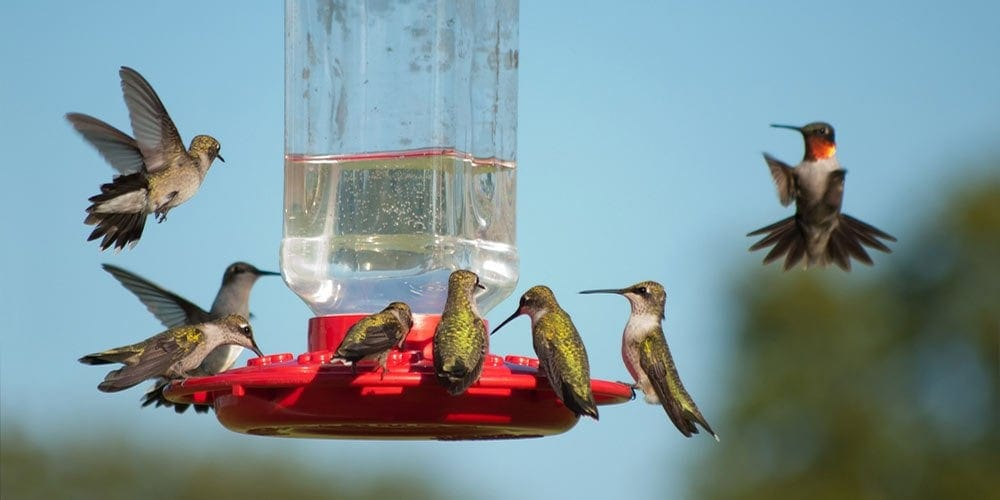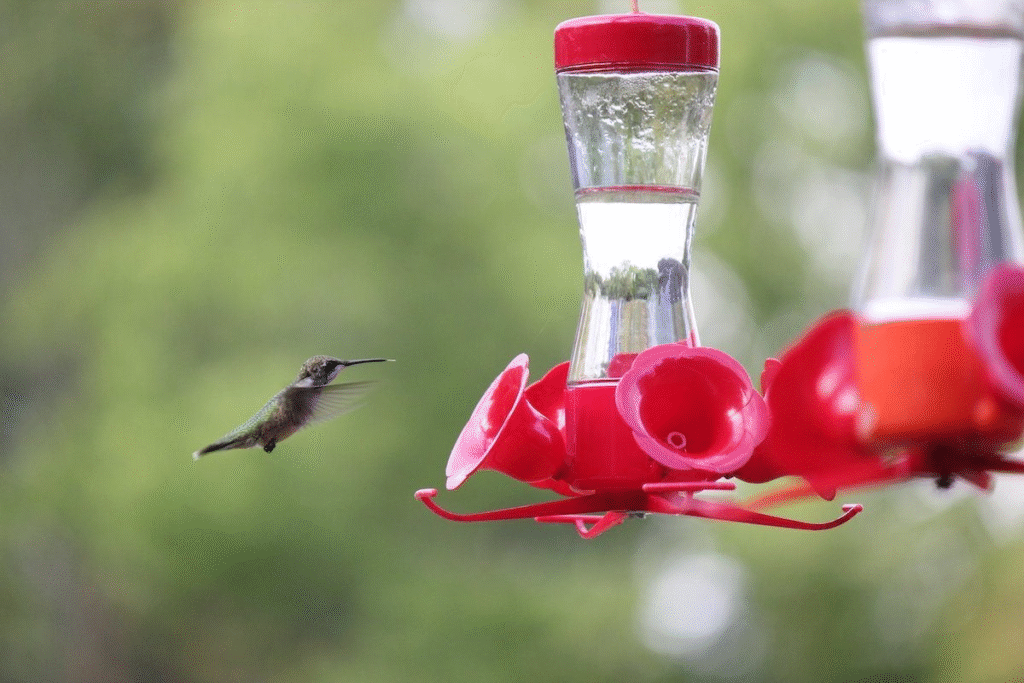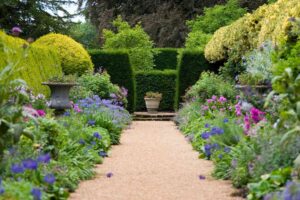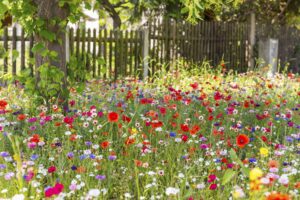How to Attract Hummingbirds to Your Garden
Imagine your garden buzzing with the iridescent flash of tiny wings, as hummingbirds dart from flower to flower. These remarkable creatures, weighing less than a penny, can transform any outdoor space into a vibrant sanctuary. Creating a hummingbird-friendly garden isn’t just rewarding—it’s surprisingly simple when you know what these aerial jewels seek in their habitat.
Understanding Hummingbird Behavior
Hummingbirds are unique in the avian world. As the smallest migrating birds, they possess extraordinary abilities that make them fascinating garden visitors. They can fly backward, upside down, and even hover in mid-air thanks to wings that beat 50-200 times per second. Their metabolisms run at an astonishing rate—their hearts beat up to 1,260 times per minute, and they must consume more than their body weight in nectar daily.
In North America, the Ruby-throated hummingbird is the most widespread species, though depending on your region, you might attract Black-chinned, Anna’s, Rufous, or Calliope hummingbirds among others. According to the U.S. Fish and Wildlife Service, hummingbirds serve as important pollinators for many native plant species and play a crucial role in maintaining healthy ecosystems (https://www.fws.gov/pollinator/hummingbirds).
What makes these tiny birds even more remarkable is their incredible memory. They remember every flower they’ve visited and can calculate precisely when each will refill with nectar. When you create a hummingbird garden, you’re not just providing a temporary pit stop—you’re establishing a location these intelligent birds will return to year after year.
Essential Elements of a Hummingbird Garden
Creating an irresistible hummingbird habitat requires understanding their basic needs: food, water, shelter, and nesting sites. Let’s explore how you can incorporate each of these elements into your garden design.

Food Sources: Native Plants and Nectar
Hummingbirds have co-evolved with native flowering plants, developing specialized relationships that benefit both species. Your garden should feature a diverse array of nectar-rich flowers, especially those with tubular blooms in bright colors like red, orange, and pink—hummingbirds’ preferred color spectrum.
Native plants are particularly important as they provide the precise nutritional profile these high-energy birds require. According to the National Park Service, native plants support significantly more biodiversity than non-native alternatives (https://www.nps.gov/subjects/pollinators/plant-natives.htm).
Some exceptional native plants for attracting hummingbirds include:
Cardinal flower (Lobelia cardinalis) produces striking red tubular blooms that practically scream “hummingbird buffet.” These plants thrive in moist areas and partial shade, blooming from mid-summer through fall.
Trumpet honeysuckle (Lonicera sempervirens) offers clusters of tubular red and orange flowers. Unlike its invasive Japanese cousin, this native vine provides nectar throughout the summer while maintaining good garden manners.
Bee balm (Monarda didyma) features unique whorled flowers in vibrant reds and purples that attract hummingbirds throughout summer. This member of the mint family spreads readily, filling areas with aromatic foliage and nectar-rich blooms.
Eastern columbine (Aquilegia canadensis) provides early-season nectar with its distinctive red and yellow nodding flowers. These shade-tolerant perennials bloom when many hummingbirds are just returning from migration, offering a welcome food source.
Creating a Succession of Blooms
To maintain a constant hummingbird presence, plan your garden to provide continuous nectar from spring through fall. This “succession planting” ensures food is available throughout the hummingbirds’ active season.
Early spring bloomers like columbine and native azaleas welcome returning migrants. Summer brings the peak blooming period with bee balm, cardinal flower, and native penstemon varieties. Late-season plants like autumn sage and native asters provide crucial energy for fall migration.
The timing of blooms in your region will depend on your USDA hardiness zone. Here’s a sample bloom calendar for creating continuous nectar sources:
| Season | Recommended Native Plants | Bloom Period | Growing Zones |
|---|---|---|---|
| Early Spring | Eastern Columbine (Aquilegia canadensis) | March-May | 3-8 |
| Wild Bleeding Heart (Dicentra eximia) | April-June | 3-9 | |
| Late Spring | Red Buckeye (Aesculus pavia) | April-May | 4-8 |
| Wild Bergamot (Monarda fistulosa) | May-July | 3-9 | |
| Summer | Cardinal Flower (Lobelia cardinalis) | July-September | 3-9 |
| Trumpet Honeysuckle (Lonicera sempervirens) | June-August | 4-9 | |
| Late Summer/Fall | Great Blue Lobelia (Lobelia siphilitica) | August-October | 4-9 |
| Autumn Sage (Salvia greggii) | July-Frost | 7-10 |
By selecting plants from each bloom period appropriate for your growing zone, you’ll create a garden that hummingbirds will visit throughout their active season.
Supplemental Feeding with Hummingbird Feeders
While native plants should form the foundation of your hummingbird habitat, supplemental feeders can provide additional nutrition and allow for closer observation of these captivating birds. Proper feeder selection and maintenance are crucial for hummingbird health.
Choose feeders with red parts (but clear nectar) and multiple feeding ports. Position them where you can view them easily, but also near tree branches or shrubs that provide protective perches. Hummingbirds prefer to rest between feeding sessions and scan for danger before approaching feeders.
The ideal nectar solution mimics flower nectar: a simple 1:4 ratio of white granulated sugar to water. Boil the water briefly, stir in the sugar until dissolved, then cool completely before filling your feeders. Avoid using honey, brown sugar, artificial sweeteners, or red dye—these can be harmful to hummingbirds.
During hot weather, change the nectar every 2-3 days to prevent fermentation and growth of harmful molds. Clean feeders thoroughly with hot water and a bottle brush weekly, avoiding soap residue which can be toxic to the birds.

Water Features: Beyond Basic Birdbaths
While hummingbirds get most of their water needs met through their nectar diet, they still benefit from water features for bathing. Unlike other birds that wade into traditional birdbaths, hummingbirds prefer to fly through gentle sprays or mists.
Consider installing a mister attachment to your garden hose, positioning it near foliage where hummingbirds can perch and fly through the fine spray. Another option is a small fountain with a gentle cascade or bubbler—the moving water attracts hummingbirds both visually and audibly.
If using a traditional birdbath, add a small bubbler to create movement, or place smooth stones that barely break the water’s surface to create shallow bathing areas. Position water features in dappled shade to keep the water fresh longer and provide security for bathing birds.
Safe Shelter and Nesting Sites
Hummingbirds are vulnerable to predators and need safe places to rest, shelter from inclement weather, and raise their young. Layered plantings that include trees, shrubs, and perennials create the vertical diversity these birds prefer.
Small trees and large shrubs provide the ideal framework. Native dogwoods, serviceberries, and redbuds not only offer spring flowers but also create the dappled light conditions many hummingbird-friendly perennials prefer. Position these woody plants to break prevailing winds and create sheltered microclimate pockets throughout your garden.
Female hummingbirds build remarkable nests using plant materials held together with spider silk, which allows the nest to expand as the nestlings grow. Providing plants with downy leaves or seeds like native thistle, milkweed, and cinnamon ferns supports nesting behaviors. Allow some garden areas to remain slightly unkempt, preserving seed heads and natural materials these resourceful builders can utilize.
Garden Design Strategies for Maximum Attraction
Now that you understand the essential elements hummingbirds need, how do you arrange them to create an irresistible habitat? Strategic design principles can significantly increase your garden’s appeal to these discerning visitors.
Planting Patterns and Density
Hummingbirds are drawn to mass plantings that create visual impact and concentrated nectar sources. Rather than scattering individual plants throughout your garden, group 3-5 specimens of the same variety to create “nectar hotspots” that register from a distance.
Consider vertical layering when planning your garden. Hummingbirds navigate and feed at multiple heights, from ground level to treetops. Create feeding stations at varying elevations by incorporating vines on trellises, hanging baskets, tall perennials, and flowering shrubs.
Creating Territories and Sight Lines
Hummingbirds are notoriously territorial, especially males during breeding season. You can accommodate more hummingbirds by designing your garden with visual barriers that create multiple territories. Strategically placed shrubs, arbors, or garden structures prevent dominant birds from controlling all feeding areas.
Incorporate open sight lines between major nectar sources and perching spots. Hummingbirds prefer to survey their territory and evaluate safety before approaching flowers or feeders. Provide scattered perching opportunities—slender branches or even artistic garden stakes—that allow birds to rest while maintaining vigilance.
Minimizing Dangers to Hummingbirds
A truly hummingbird-friendly garden eliminates common hazards. Avoid using pesticides, especially insecticides, as hummingbirds supplement their nectar diet with small insects for protein. Even organic pesticides can harm these sensitive birds or eliminate their protein sources.
Protect against window collisions by applying window decals or screens to large glass surfaces near feeding areas. Position feeders either very close to windows (less than 3 feet) or quite far away (more than 30 feet) to reduce collision risk—when feeders are placed at middle distances, birds may accelerate toward perceived escape routes during startled flight.
Outdoor cats represent one of the greatest threats to garden birds. If you have cats, consider creating enclosed “catios” that allow pets outdoor time without endangering wildlife. Alternatively, position hummingbird features away from areas where cats can hide and ambush.
Regional Considerations and Specialization
Hummingbird species and their preferred plants vary significantly across the United States. Understanding your region’s specific visitors allows you to tailor your garden to local species’ preferences.
Eastern and Midwestern Gardens
The Ruby-throated hummingbird is the primary species throughout the eastern half of the United States. These birds make an astonishing migration, with many crossing the Gulf of Mexico in a single 500-mile flight.
Eastern gardens should focus on providing high-energy nectar sources during spring and fall migration periods. Coral honeysuckle, cardinal flower, and native azaleas support spring arrivals, while late-blooming perennials like great blue lobelia and native asters fuel fall departures.
Western and Southwestern Gardens
Western states enjoy greater hummingbird diversity, with species like Anna’s, Costa’s, Black-chinned, Broad-tailed, Calliope, and Rufous hummingbirds appearing throughout the region. Some southwestern locations can host hummingbirds year-round, particularly in milder winter areas.
Western gardens benefit from drought-tolerant natives like penstemons, salvias, and zauschneria (California fuchsia). In desert regions, ocotillo, desert willow, and chuparosa create natural feeding stations adapted to arid conditions.
Pacific Northwest Specialties
The Pacific Northwest hosts several migratory species, with Rufous hummingbirds being particularly common. These copper-colored birds are known for their exceptional territoriality and aggression at feeders.
Gardens in this region should incorporate early-blooming red-flowering currant, western columbine, and twinberry honeysuckle for spring migrants. Native western penstemons and fireweed support summer residents, while late-blooming fuchsias provide fall fuel.
Seasonal Maintenance for Hummingbird Gardens
Maintaining a hummingbird garden requires some seasonal attention, but generally less maintenance than traditional ornamental landscapes.
Spring Preparation
As temperatures warm, prepare for returning migrants by cleaning and refilling feeders. Avoid aggressive spring cleanup—leave some leaf litter and natural materials for nesting females. Prune summer-blooming shrubs before new growth begins but wait to cut back any plants that may still provide shelter or nesting material.
Summer Management
During peak hummingbird season, practice “deadheading”—removing spent flowers—to encourage continued blooming. Check feeders daily during hot weather, cleaning and refilling as needed. Provide additional water features during dry periods, as nectar-producing plants may reduce flowering during drought stress.
Fall Transitioning
As migration approaches, maintain late-season nectar sources diligently. Continue feeder maintenance until two weeks after you’ve seen your last hummingbird—stragglers and late migrants may still benefit from your garden’s resources. Collect and store seeds from native plants for future propagation.

Winter Considerations
In most regions, prepare for the hummingbirds’ return by evaluating your garden’s performance and planning improvements. In mild-winter areas of the South and West where hummingbirds may overwinter, maintain some feeders and protect frost-sensitive nectar plants during cold snaps.
Community and Conservation Connections
Your hummingbird garden contributes to larger conservation efforts. These birds face challenges from habitat loss, climate change, and declining insect populations. By creating supportive habitat, you join a network of gardeners providing stepping stones for migrating populations.
Consider certifying your garden through programs like the National Wildlife Federation’s Garden for Wildlife program or joining citizen science projects like eBird or the Hummingbird Monitoring Network. Your observations can contribute valuable data about migration patterns, population trends, and habitat use.
Share your hummingbird garden with neighbors, friends, and community groups. Host garden tours during peak season or distribute native plant seeds to spread the practice of habitat gardening. As more people create hummingbird-friendly spaces, the collective impact grows exponentially.
Conclusion: The Rewards of Patience
Creating a thriving hummingbird garden requires some patience. While feeders may attract birds quickly, developing the diverse plant community that supports genuine habitat takes time. Some hummingbird-friendly perennials don’t reach their full blooming potential until their second or third year.
The rewards, however, are well worth the wait. Few gardening experiences match the thrill of a hummingbird hovering at eye level, its wingbeats creating a distinctive hum as iridescent feathers catch the light. These remarkable birds bring your garden to life in a unique way, connecting your backyard to ancient relationships between flowers and their pollinators.
By providing food, water, shelter, and nesting sites through thoughtful garden design, you create not just a beautiful landscape but a functioning ecosystem that supports one of nature’s most extraordinary creatures. Your hummingbird garden becomes both a personal sanctuary and a valuable contribution to wildlife conservation—truly a garden with purpose.






